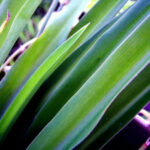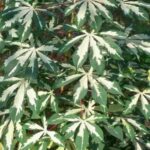Mushroom growing is an exciting endeavor, but it takes a lot of planning and a lot of knowledge. Some may assume that growing a mushroom is the same as growing a plant, but these are two very different types of farming. In fact, biologically, fungi have more in common with animals than plants! Plants make their own food by producing chlorophyll, however fungi are degraders. They derive their food by decomposing dead organic matter. This article will outline the very basic tools a beginner would need to determine the types of mushrooms they wish to grow and how to grow them.
Just as a fruit isn’t the whole of a plant (it grows on a tree, bush, vine, etc), a mushroom isn’t the whole of the fungi. There is a support system called the mycelium, which is responsible for delivering nutrients and keeping the mushroom anchored. This mycelium moves through the substrate (growing medium) and breaks it down. Generally speaking, each fungus has a different medium it prefers to be grown on, even though there are a few that can be grown “on a wide range of materials” as outlined in an article released by the National Sustainable Agriculture Information Service.
In order to grow mushrooms, the grower needs to be familiar with the life cycle of the particular fungi he wishes to raise. This kind of information can be gathered through online research, plant pathology reading materials, or even taking a plant pathology class. Generally speaking, oyster mushrooms are easiest to grow, while mushrooms like truffles, morels, and shiitakes fetch a high price. It’s probably best for beginning growers to start on easier mushrooms then advance to more difficult ones once they get a feel for the process and environmental conditions necessary for growth.
The actual act of growing mushrooms can be surprisingly easy, depending on the type chosen. Setting up the growth area, inoculating the substrate, and monitoring the fruiting process are the main points of concern. During the growth process, the grower will need to keep a close eye on humidity levels.
The aforementioned goes for outdoor growth of mushrooms, but indoor growth is a whole new ball game. Since an indoor cultivator needs to create an artificial environment that is conducive for fungal growth, the demands on the grower are actually a lot higher. The NSAIS has an outlined step-by-step guide that describes the growing process. Here are the steps: Choose a growth medium, sterilize the medium, seed the beds with spawn, maintain optimal conditions, harvest and take to market, clean facility and begin again (NSAIS).
Overall, the act of growing mushrooms is an exciting endeavor. So make sure you identify a specific type, then research the necessary substrate and conditions to create a conducive environment for growth. Plant pathology classes from a local college are a great idea, but are probably best if you plan on pursuing mushroom farming as a long-term hobby and already have a background in science, as these classes are generally classified as upper level.
Works Cited
Beetz, Alice. “Mushroom Cultivation and Marketing.” National Sustainable Agriculture Information Service. Jul. 2004. 4 Feb. 2011. http://attra.ncat.org/attra-pub/PDF/mushroom.pdf
“Indoor Mushroom Patches.” Fungi Perfecti. 4 Feb. 2011. http://www.fungi.com/kits/indoor.html
Tortorello, Michael . Do-It-Yourself Mushrooms.” The New York Times. 14 Apr. 2010. 4 Feb. 2011. http://www.nytimes.com/2010/04/15/garden/15mushrooms.html?pagewanted=1&_r=1&ref;=fungi




